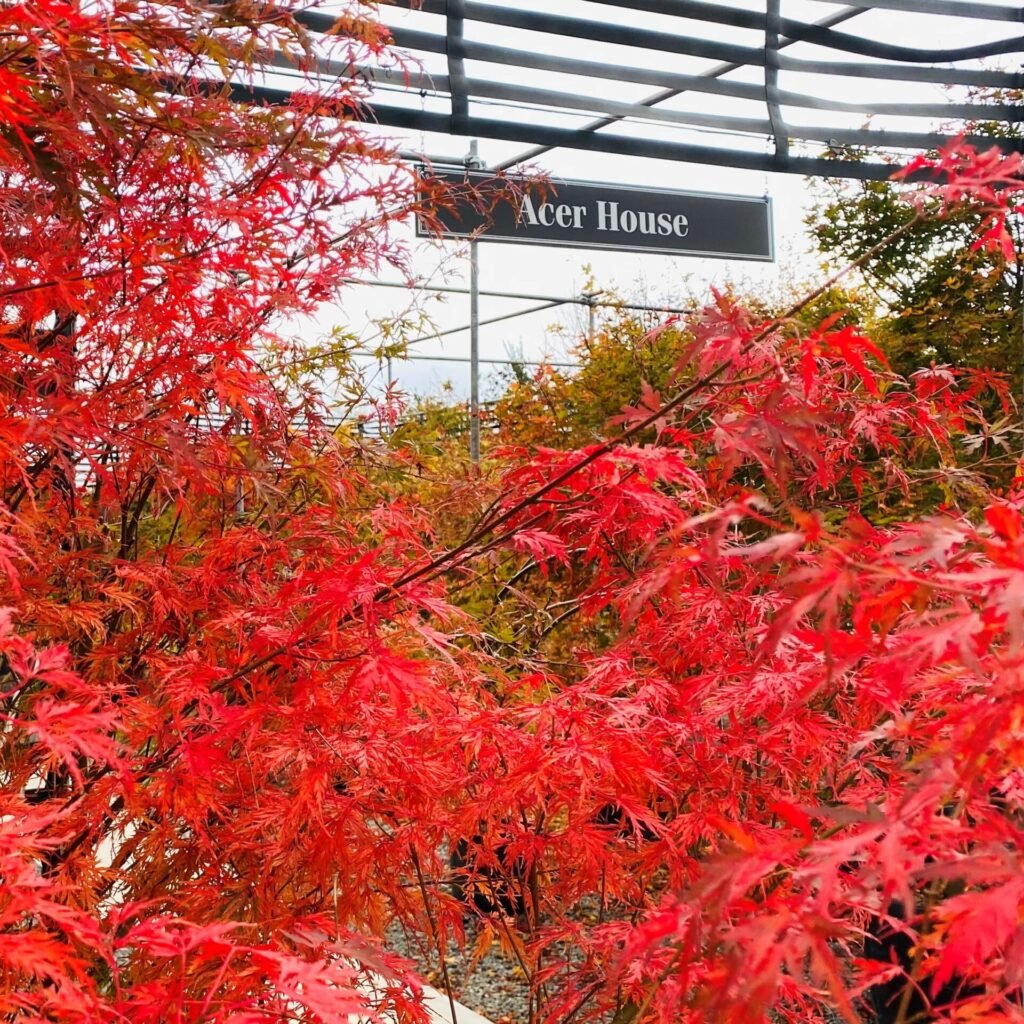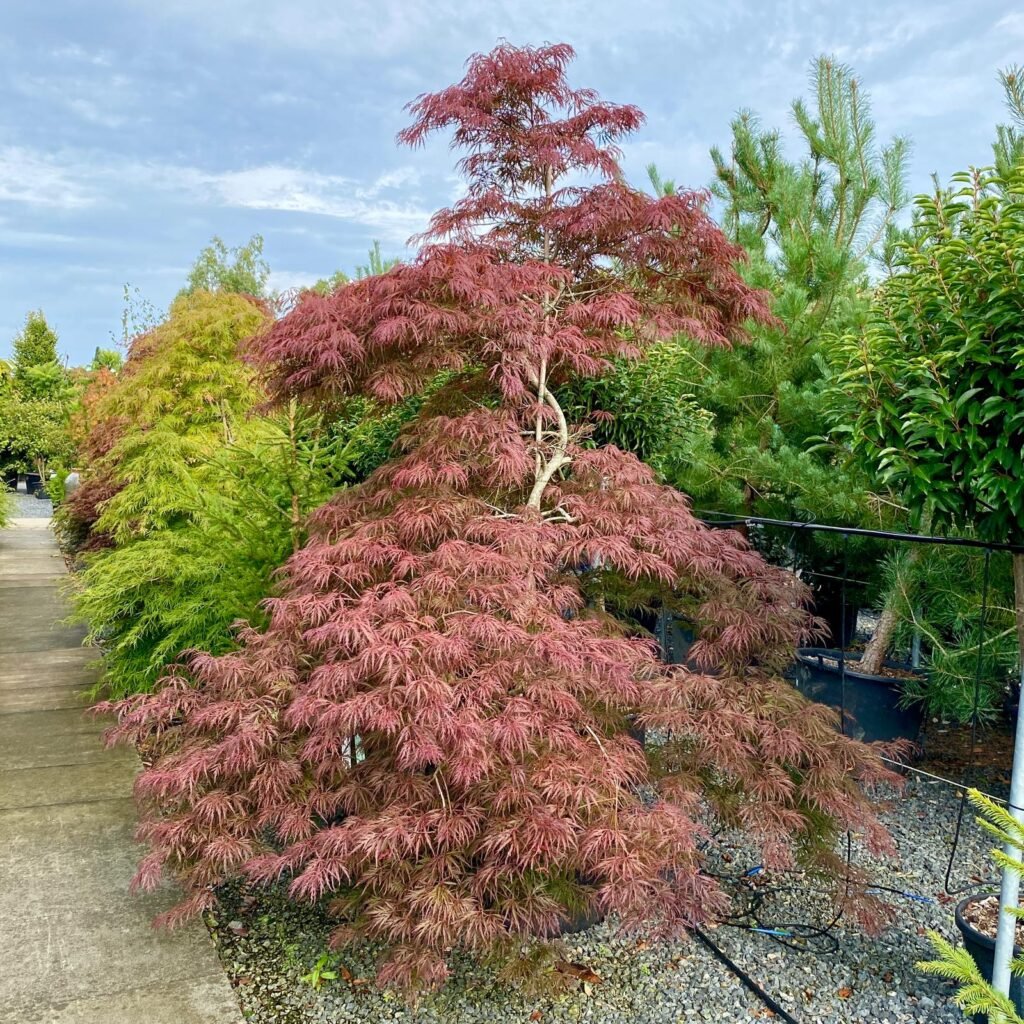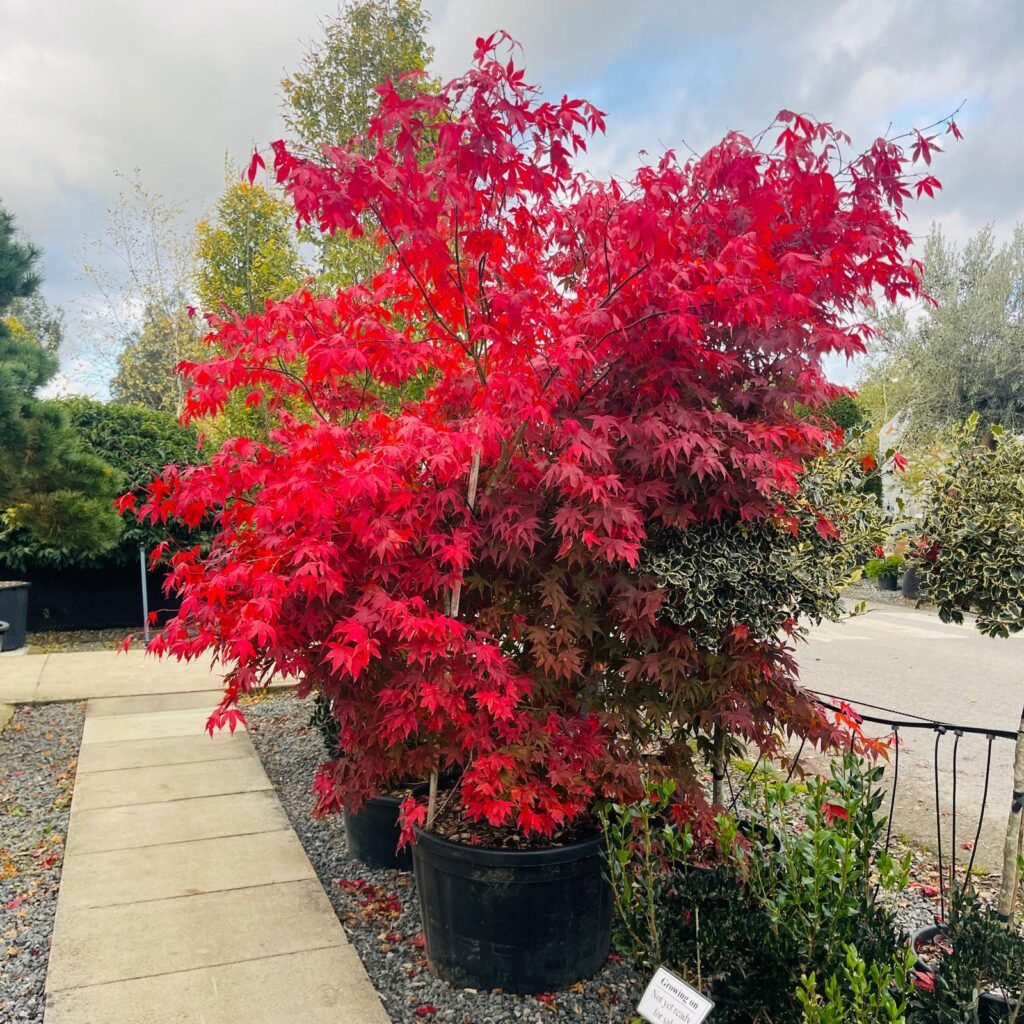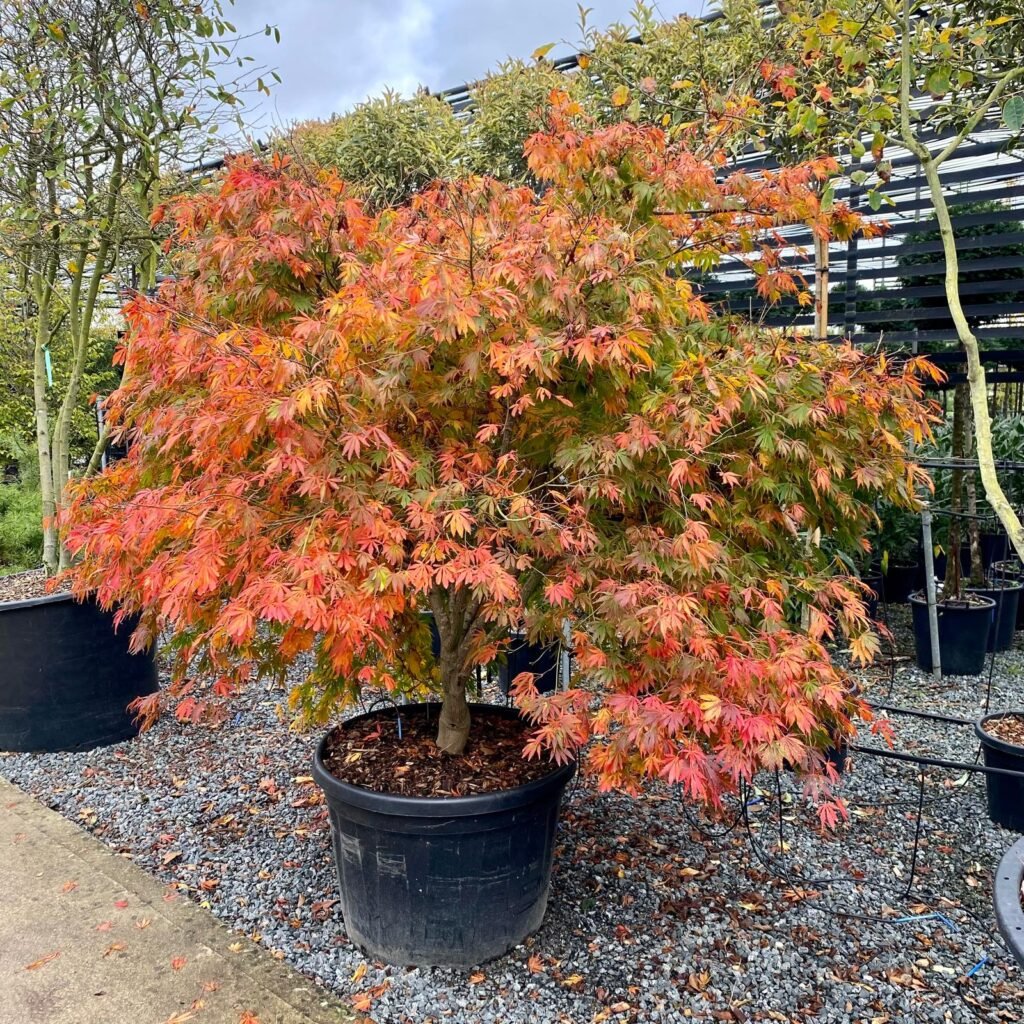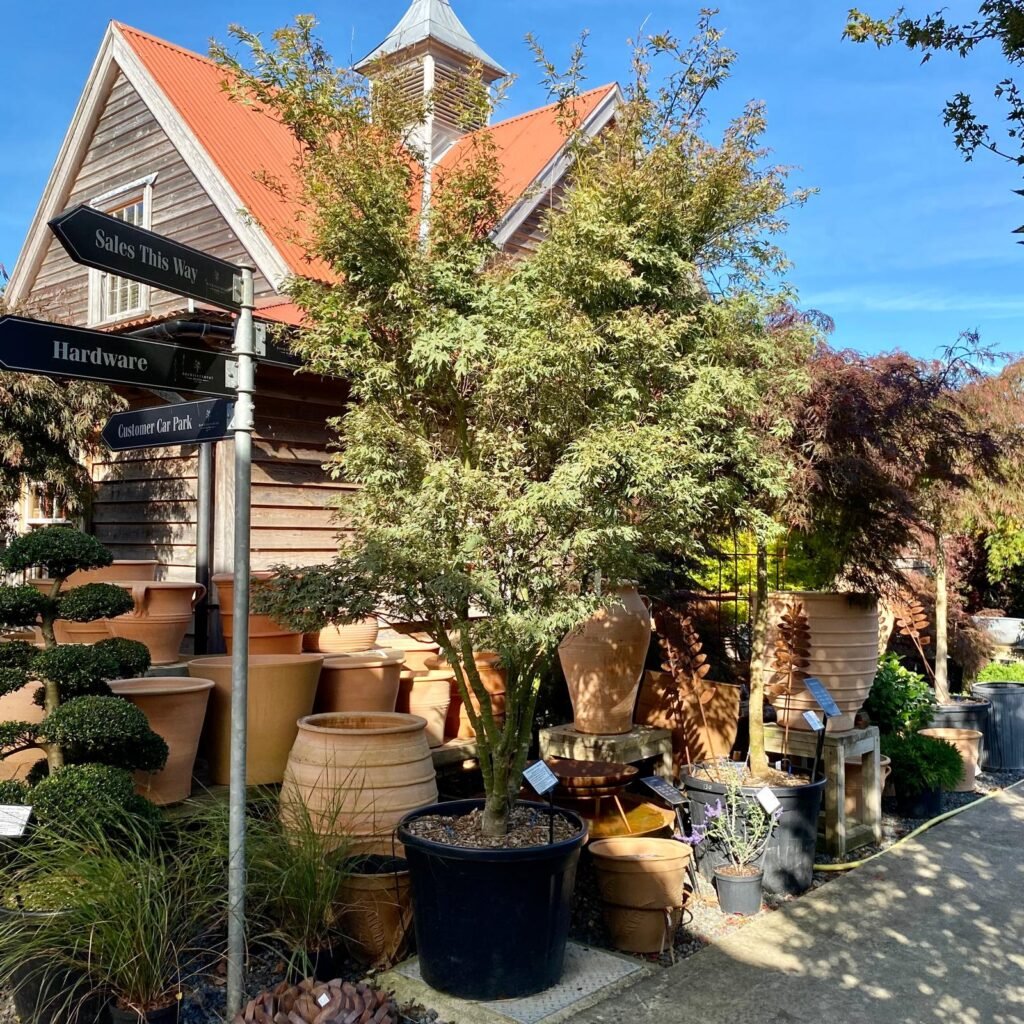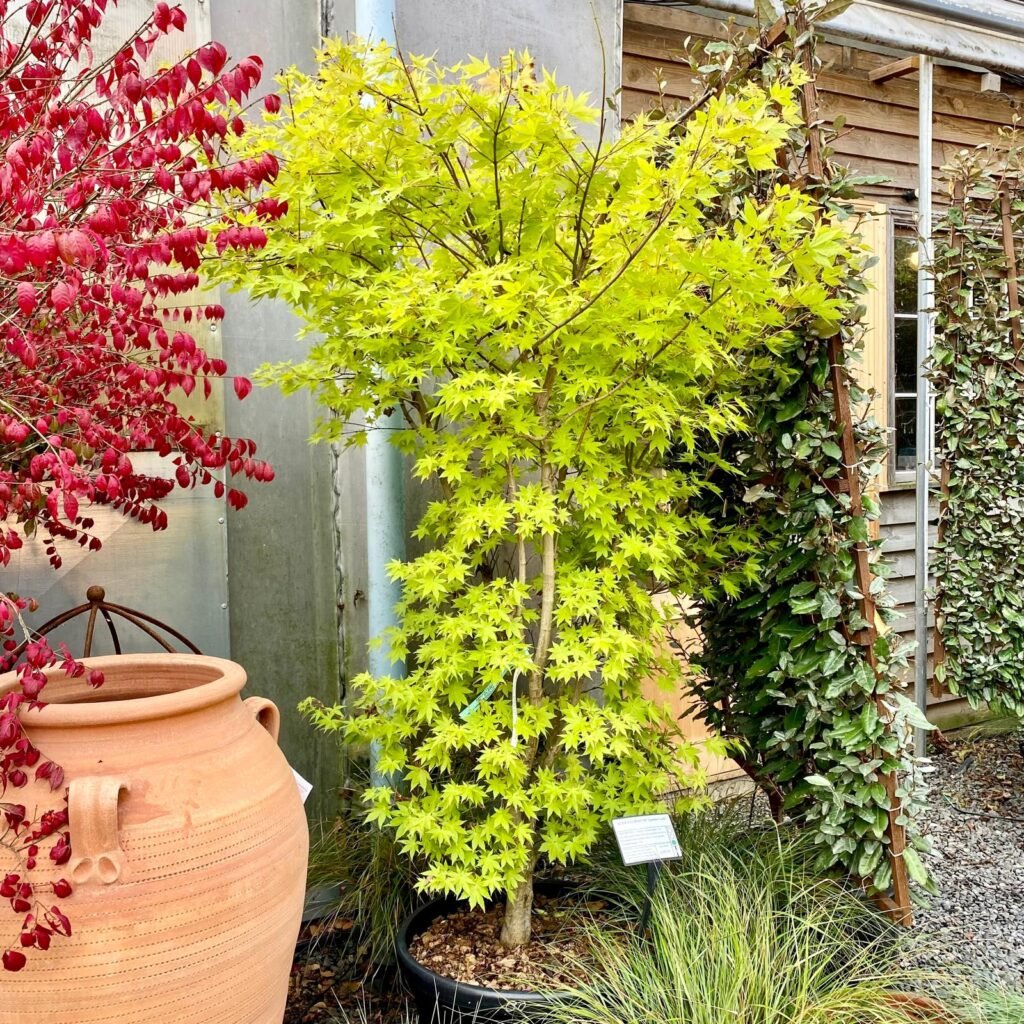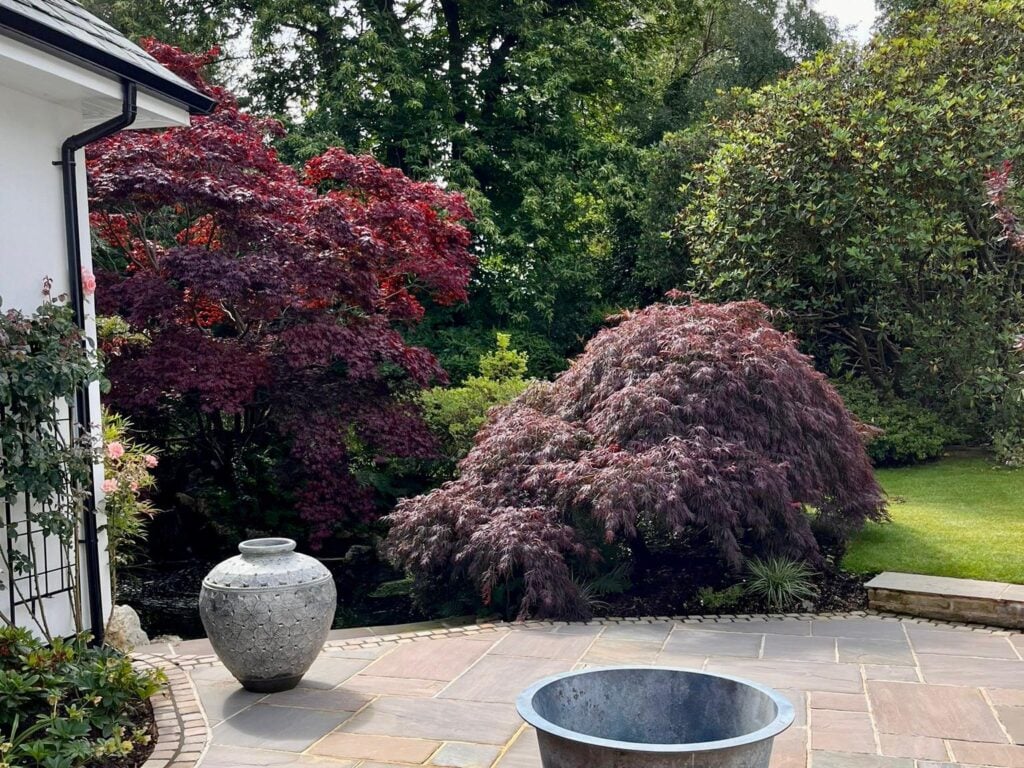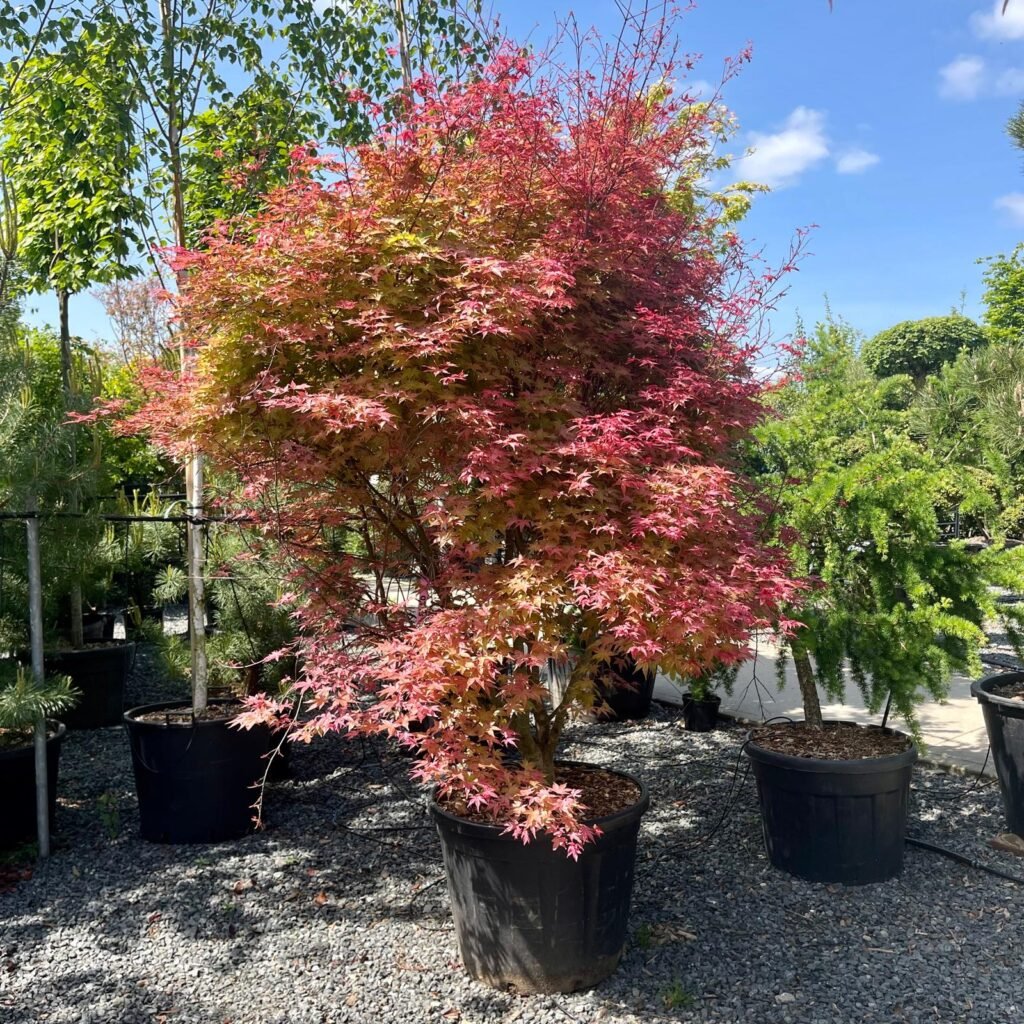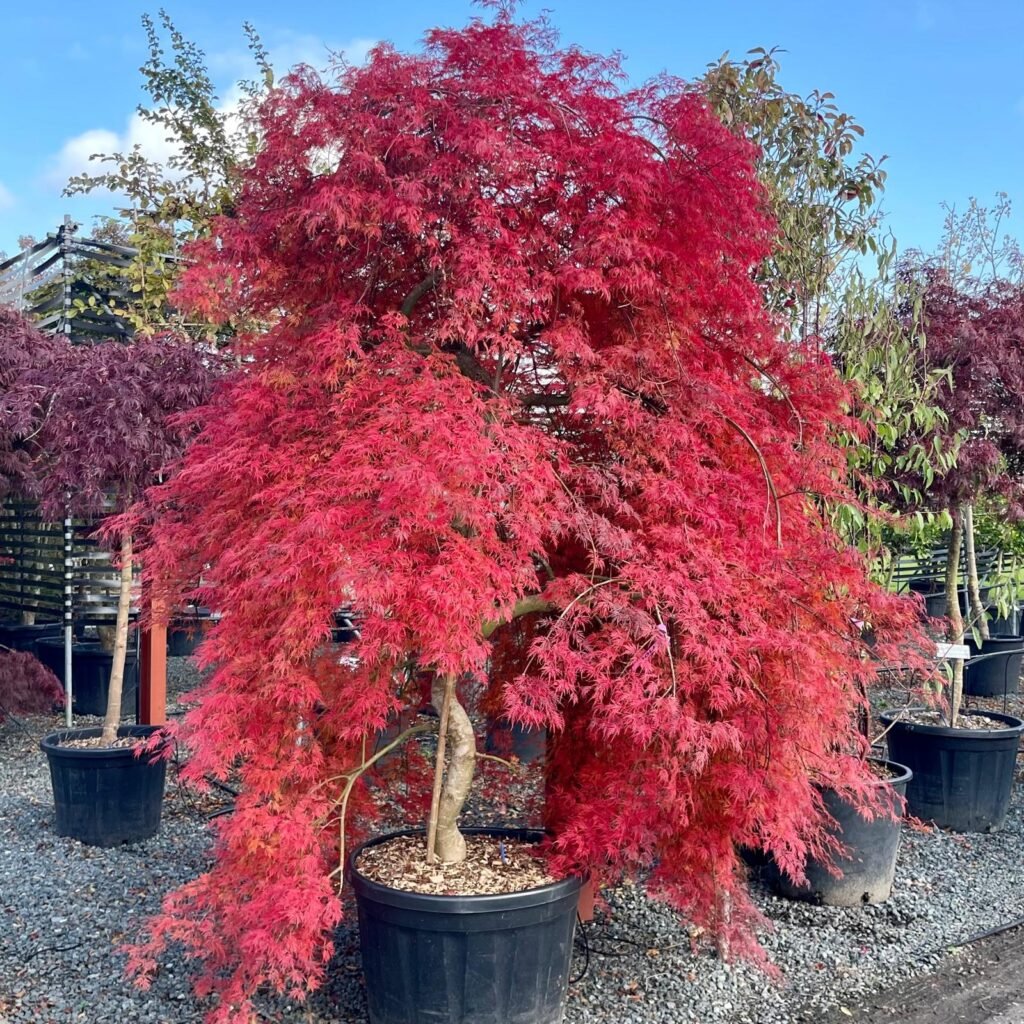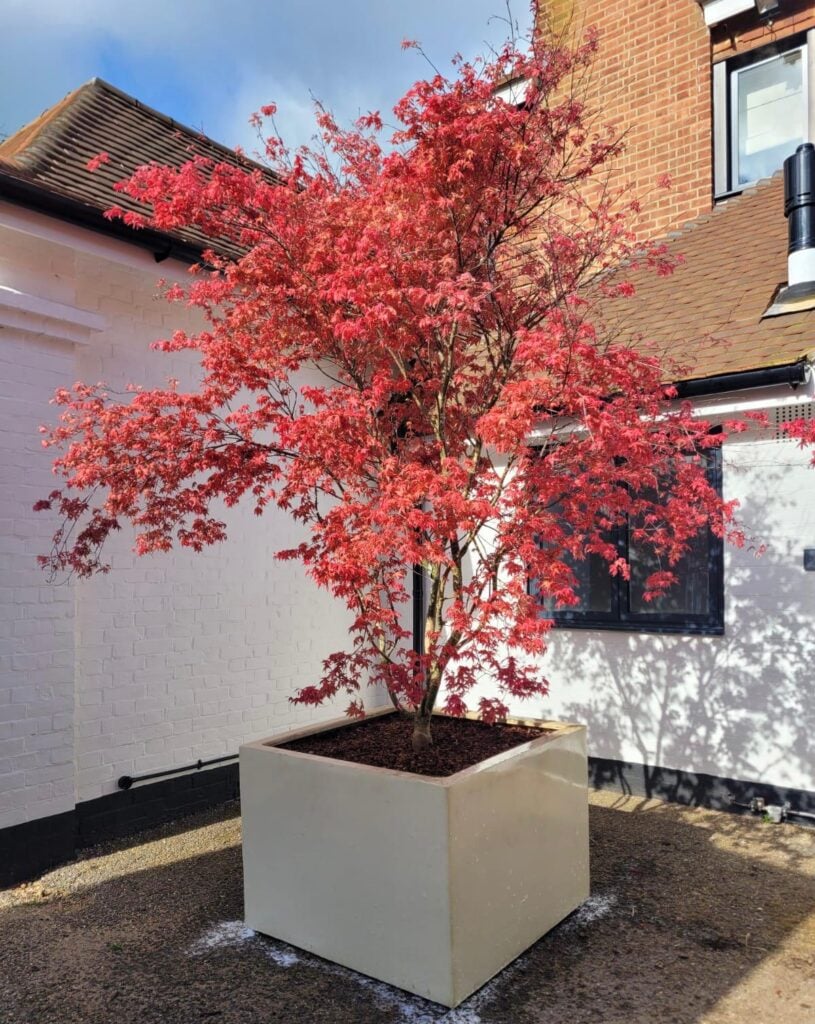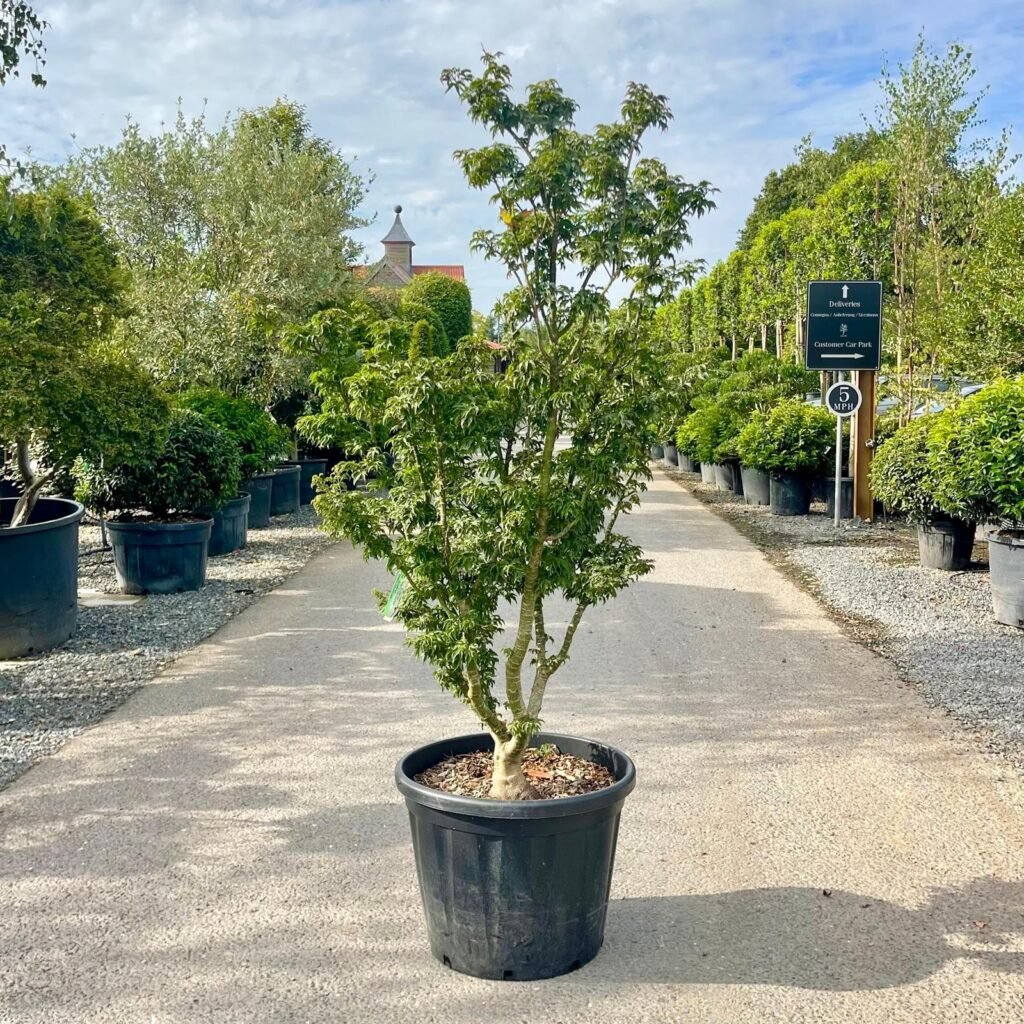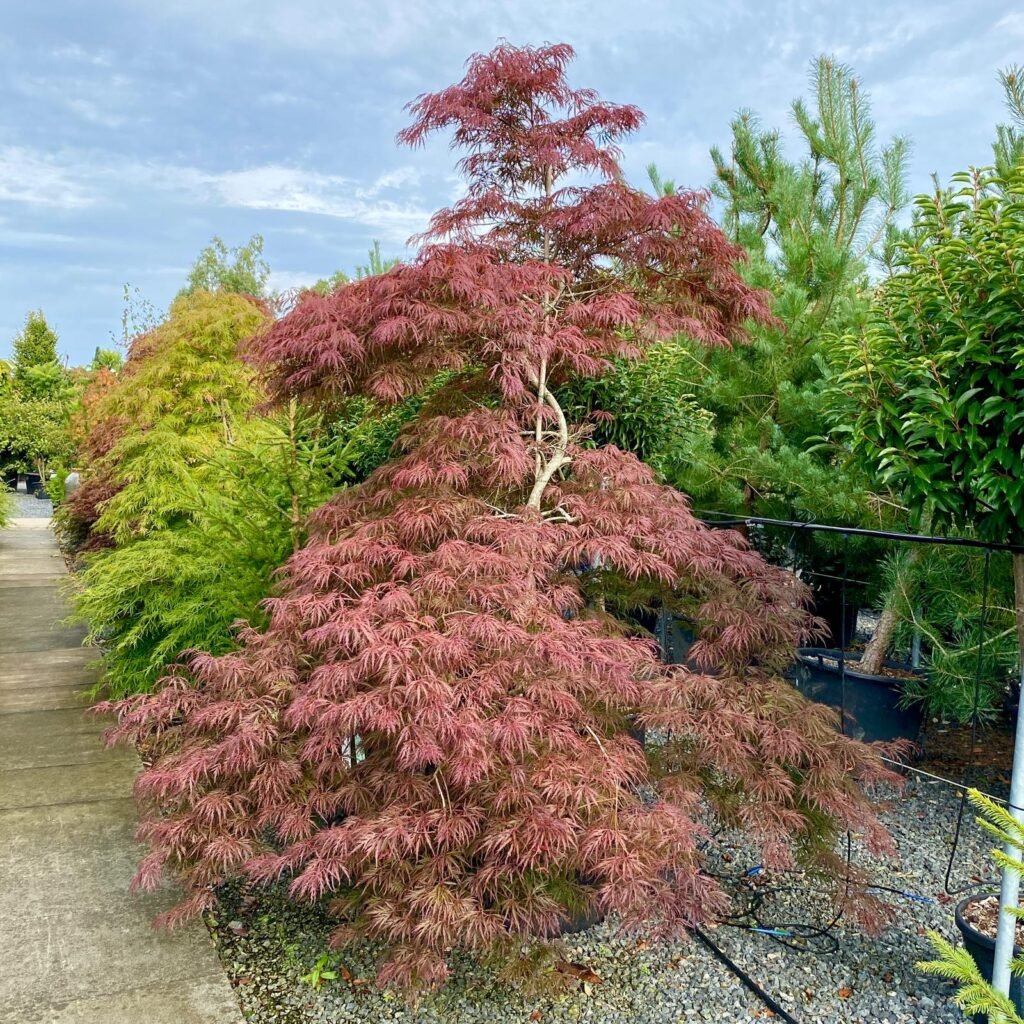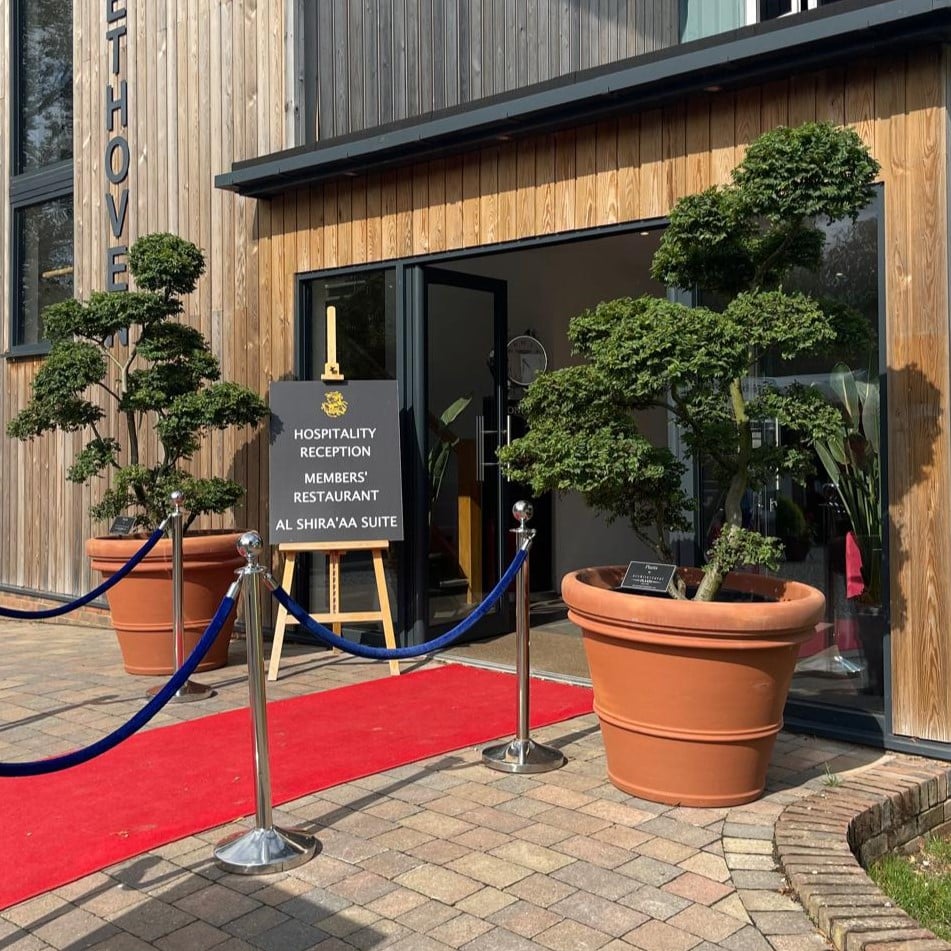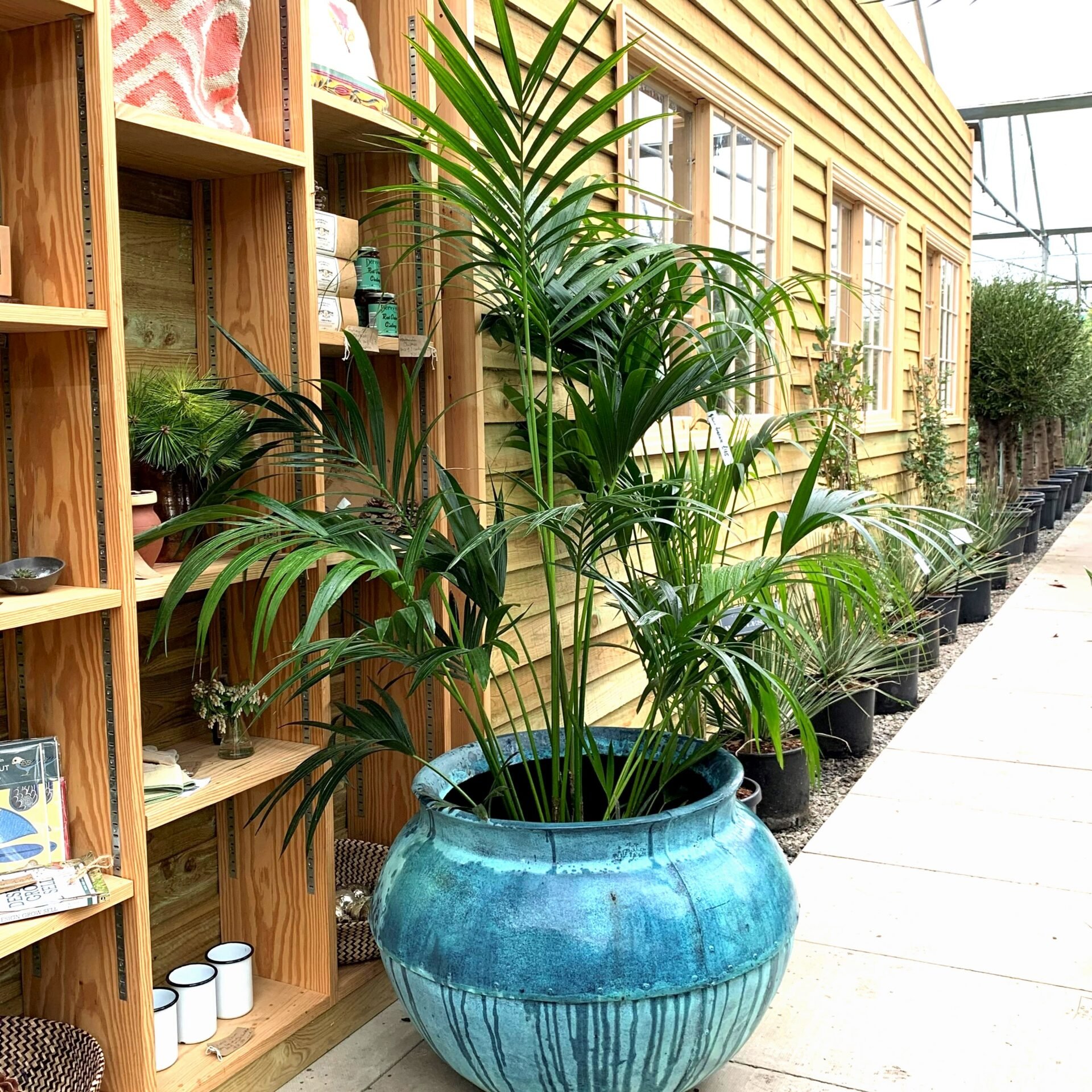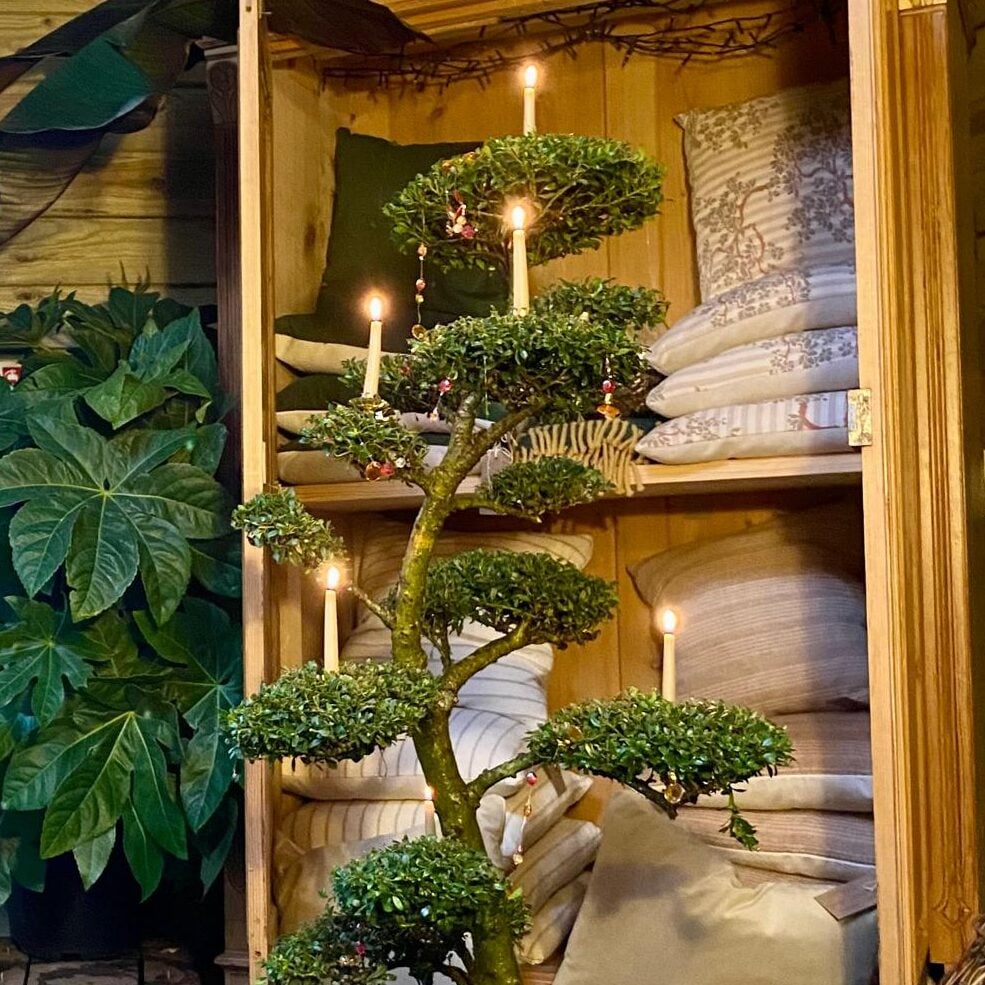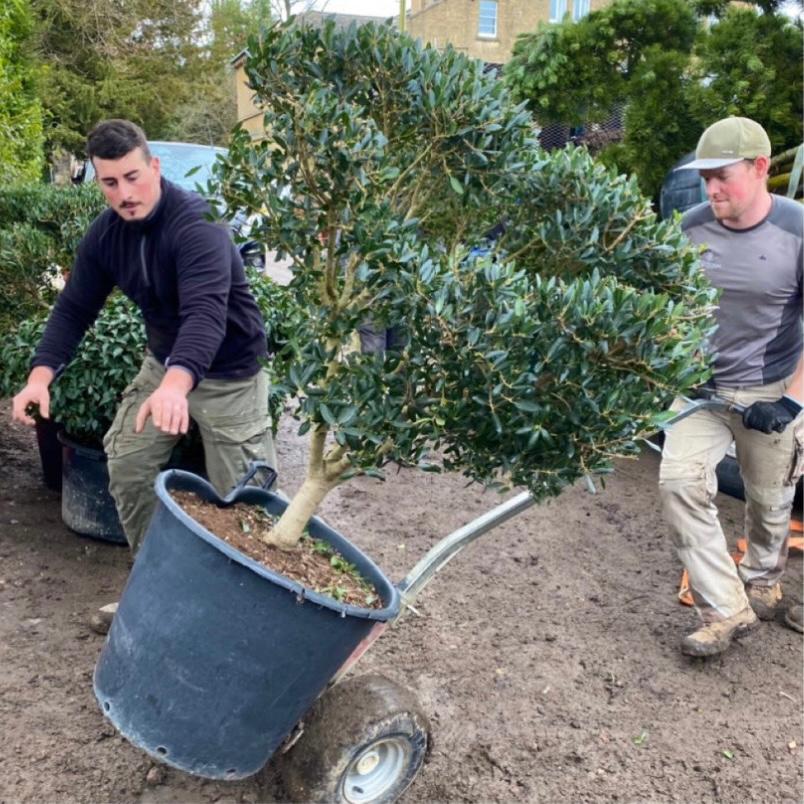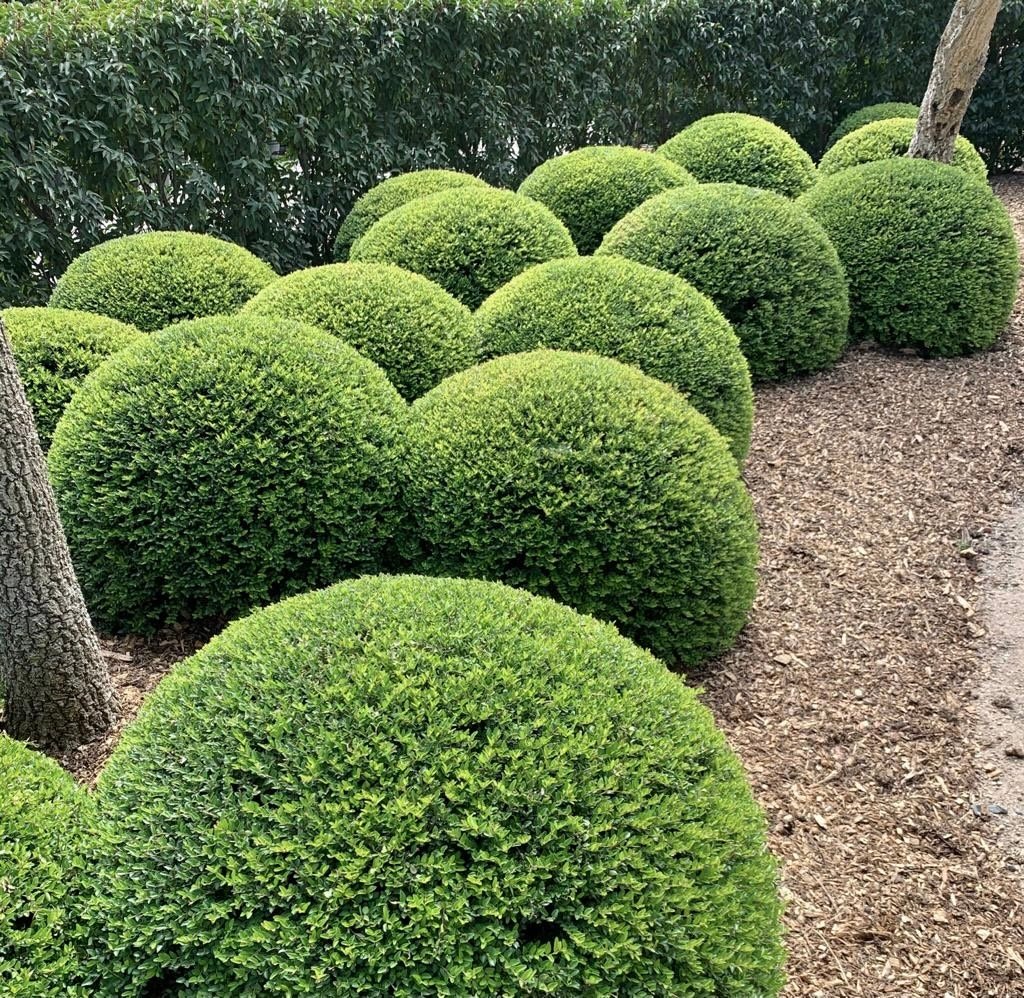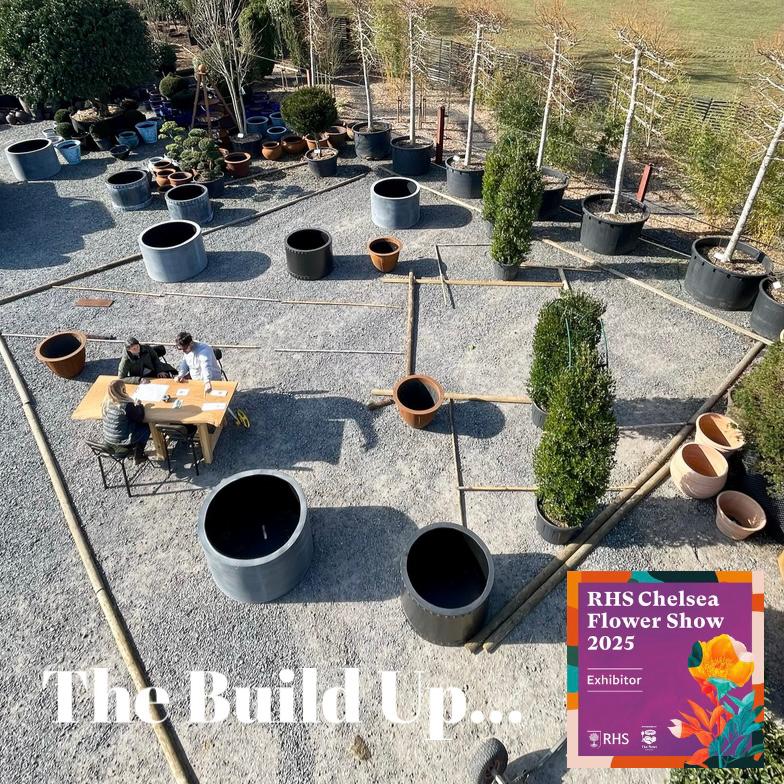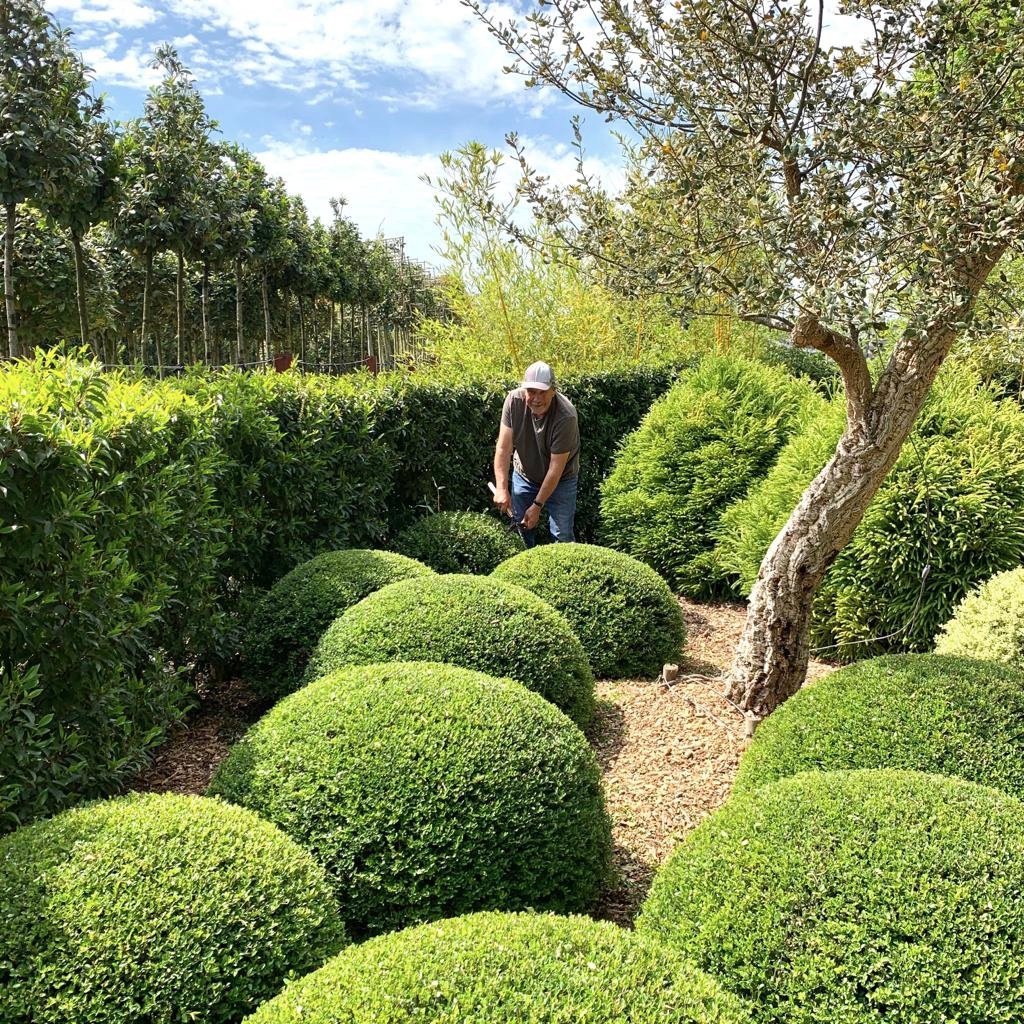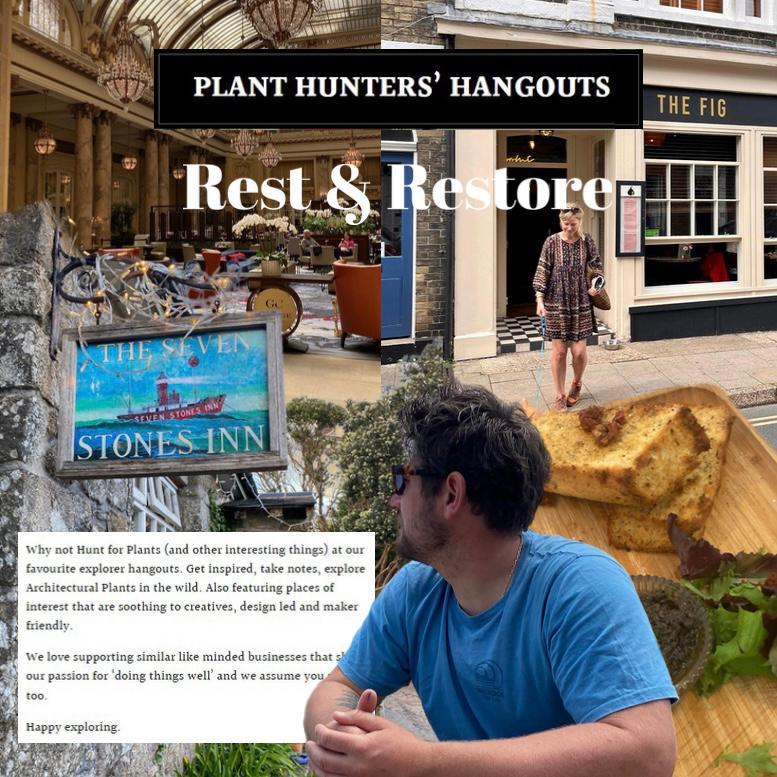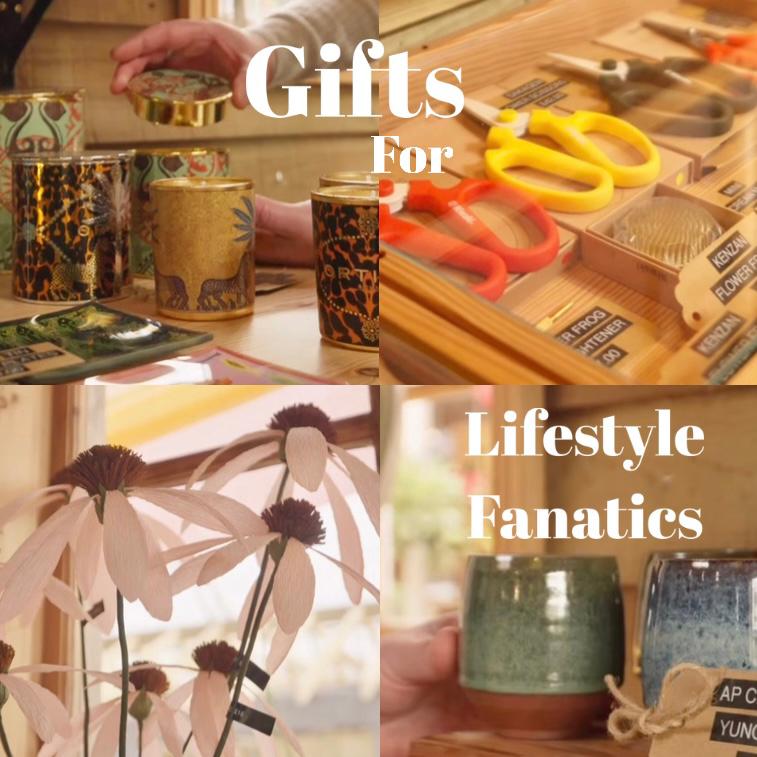Sarah’s Acer Notes
By Sarah Chandler
The Acer House
As of this week, they’re here, our new stock of Japanese Maples, those beloved small leaved and delicate trees that grace so many gardens with their green, purple or variegated summer leaves and blazing autumnal colours. There are lots and lots of trees of all shapes and sizes.
And that’s the point really; for four or five months each year, the tree will be without foliage and it will be the shape and structure of the branches that is going to give you your pleasure and because it is now winter, they have no leaves, so if you are planning on introducing a beautiful Japanese Maple into your garden, why wait for the spring? It actually makes a lot more sense to visit us now.
A few things to contemplate while choosing your Acers:
Acer palmatum is almost wholly endemic to Japan, and because it is the most variable of all acer species, it has given rise to a huge number of varieties, mutations and sports. Interesting plants have for centuries been collected from the wild, taken into gardens, grafted and propagated under cultivation and since these plants were being grown in close proximity this too resulted in both accidental and deliberate cross pollination with yet more distinct types occurring over time.
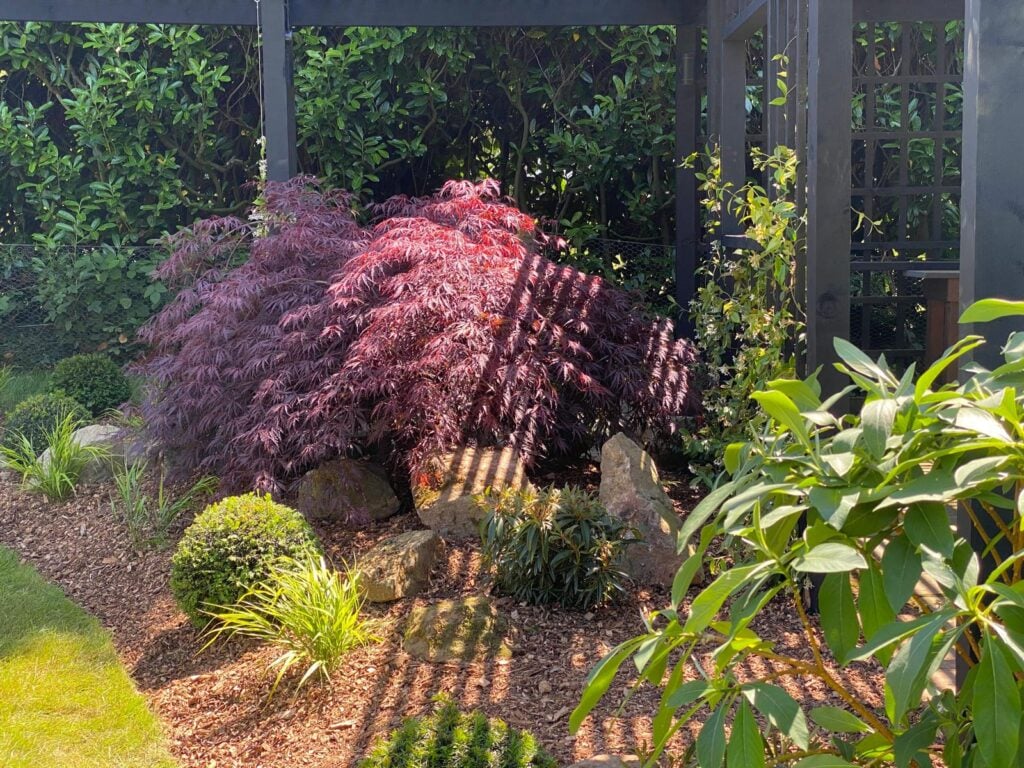
The earliest known book on acers was published in 1695 but the accurate naming of the plants is an area of much confusion though a combination of time, language, differences in pronunciation, and translation from the Japanese alphabet to to Latin. A lot of work is being done to correct miss-spellings, duplication and through genetic comparison, generally tidy up the taxonomy.
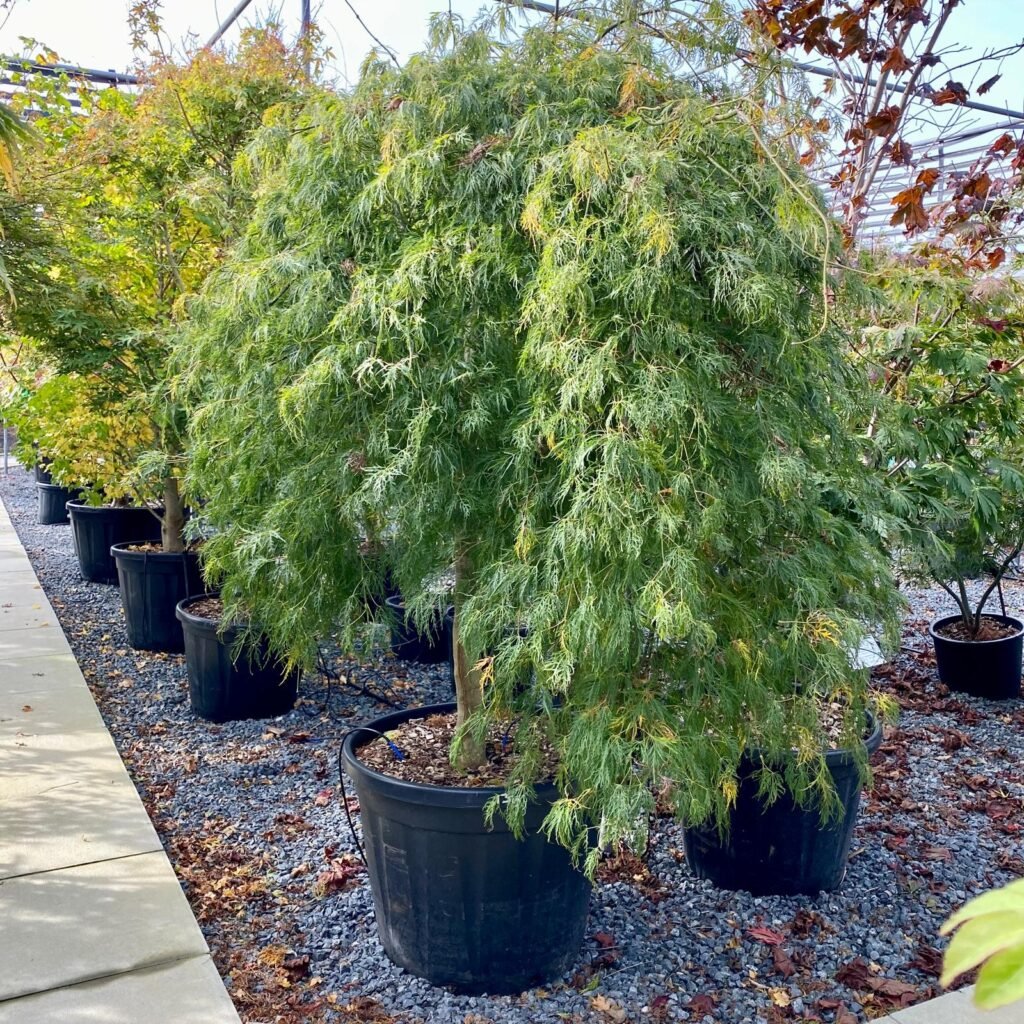
It is worth remembering that the country of Japan straddles the junctions of four tectonic plates giving rise to enormous geological movement, active volcanoes, thermal springs etc, which means that the soils are volcanic ash soils, podsols, (poor heathland soils), and brown forest soils such as we have here. The islands lie north of the Tropic of Cancer, so roughly the equivalent of northern Africa to northern France, i.e. with subtropical large leaved plants in the south to conifers in the cooler northernmost conditions. Then add the high precipitation of the monsoon climate, and yet with all these variations acers are widespread across the islands occurring over a huge range of soils, conditions and altitudes from 100m to 1300m above sea levels.
Traditionally they have been planted in lightly shaded ‘woodland edge’ conditions and they are not good in exposed and windy sites. Variegated and dissected leaves seem to be more susceptible to scorching in the hot afternoon sun than the plainer green-lobed foliaged trees.
Consistency and regularity of watering and good mulching keeps the roots cool and protected as they tend to have shallow and fibrous rootballs, which also means that they are pretty good in pots. As a whole, they are not gross feeders, which is less of a surprise given their native soils.
What do I feed my Acer?
For feeding the use of slow release pellets or a balanced rose fertiliser applied lightly in spring seems to be sufficient. The strength of the markings and colours can be affected by cultivation as both overfeeding and underfeeding can result in a masking of the variegation, though this can reappear with restoration of good cultivation.
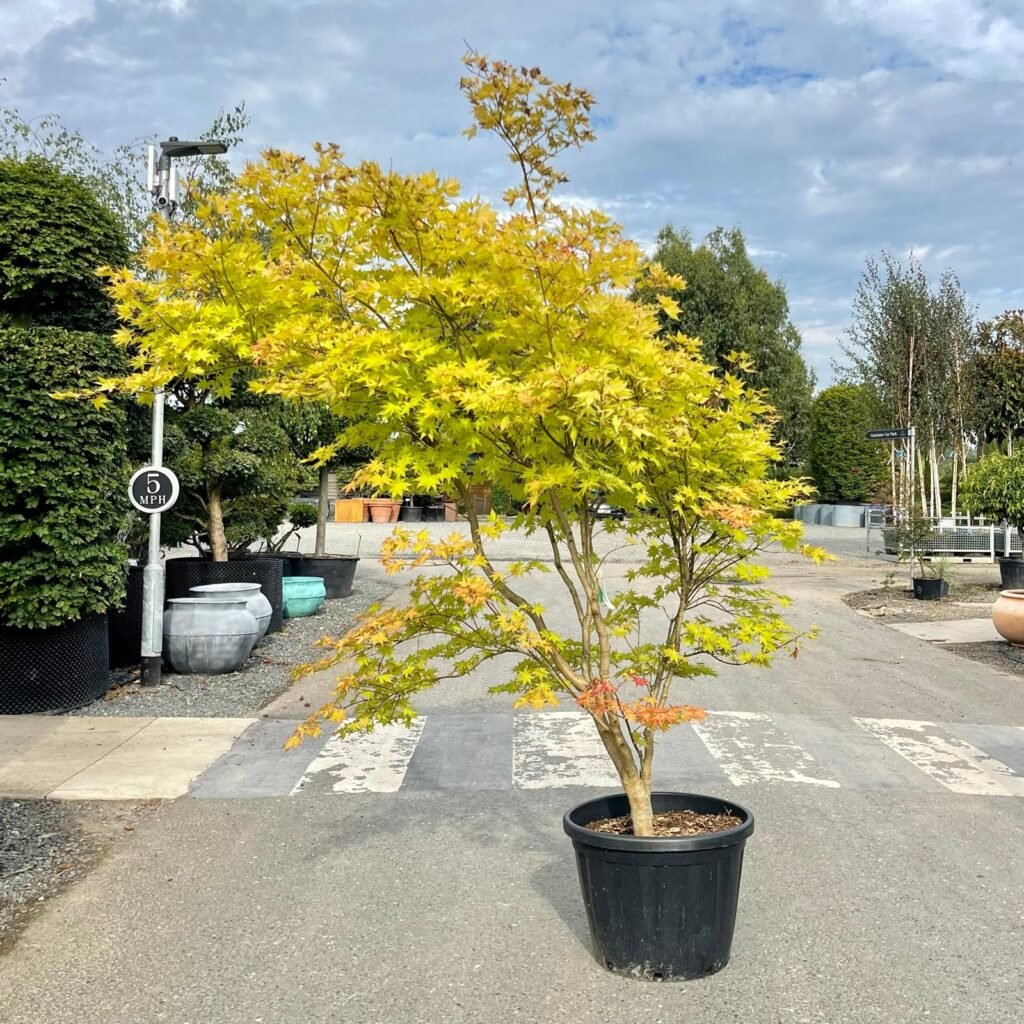
Can you prune Acers?
hey can be pruned, but as always, it is better to prune little and often than allow the tree to over grow and then have to cut back hard. Judicious thinning of the inside growth of weeping dissectum varieties can both improve appearance and minimise disease problems from congestion. The smaller the wound, the sooner it heals. And never, never prune in the early spring when the sap is rising.
We are always happy to chat with you about our trees. So if you have questions give us a ring, or better still, pop in and see our newest arrivals for yourself in all their winter glory.
NEXT BLOG
Take a look at our collection of Acers currently available at our nursery and from our online shop…

